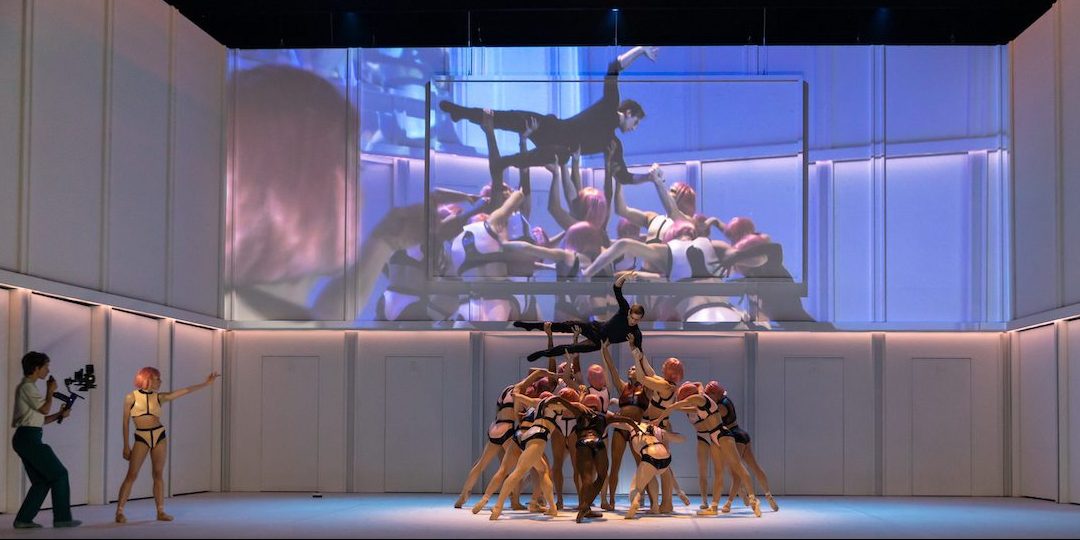This modern-day reworking of Léo Delibes’ Coppélia is an eerie, propulsive, visually arresting but often infuriating ballet. While the music and choreography are elegant and intense in equal measure, some of the choices made around updating the staging are at best bemusing and at worst significantly detract from the pleasure of the piece.
Directors and choreographers Jessica Wright and Morgann Runacre-Temple have modernised the 1870 ballet by transforming the central figure of Coppélia from an automated doll to the sort of seductive AI found in recent films such as Ex Machina or Her. The AI’s creator Dr. Coppélius bears more than a passing resemblance to Steve Jobs or Elon Musk in his all-black ensemble, and the story plays out as a very modern journalistic investigation into the ethics of creating artificial almost-humans. This updated focus is certainly a success, with themes of reality, fantasy, and alternate selves – all seen through the prism of modern technology – entirely relevant today.
Likewise, the music and choreography have undergone an impressive reimagining. The music is ‘a firm nod’ to the original but varies wildly in just how closely it cleaves to the 1870 score. Some passages are just slightly modified while others are completely transformed, deconstructed, or merely used as jumping-off points. A work party is danced to a throbbing, driving soundscape that incorporates samples, synthesisers, and recordings into the playing of the live orchestra. Its blend of the modern and the classical is an exciting, wild success.
In large parts, the choreography and dancing are equally successful. The use and combinations of colour in the opening moments almost recall Alvin Ailey while towards the climax of the work, multiple embodiments of the Coppélia AI weave wonderfully complex patterns across the stage. A dance with disembodied limbs elicits skin-crawling recollections of insects and arachnids. Bruno Micchiardi is sleek and feline in the role of Dr. Coppélius, oozing menace in every movement.
Where this meditation on the ills (or otherwise) of technology falls down is, ironically, in its use of technology. For reasons that remain unclear, a camera is occasionally used to display close-ups of the dancing on a big screen above the stage. Far from offering any clarity, it merely provides a slightly woozy distraction from the main business on the stage, while the camera operator frequently obscures the dancing. Scenes seemingly taking place off stage are projected onto the screen while the stage lights dim, frustratingly leaving the live performers dancing in the dark.
Other uses of technology are equally baffling or fail to convince. It must have seemed like a neat idea to have the dancers leap ‘into’ a screen on the stage, but given the physical performers and their digital avatars only rarely sync up, it is unsuccessful in practice. The pre-recorded voiceover that occasionally interrupts proceedings provides nothing more than unnecessary exposition and ponderous moralising.
Scottish Ballet’s Coppélia is almost superb – a truly modern production breathing new life into a 150-year-old ballet without losing the sense of the original. Unfortunately, a little like Dr. Coppélius, they at times let their obsession with technology get the better of them, allowing it to cloud some bold new music and brilliant choreography.

